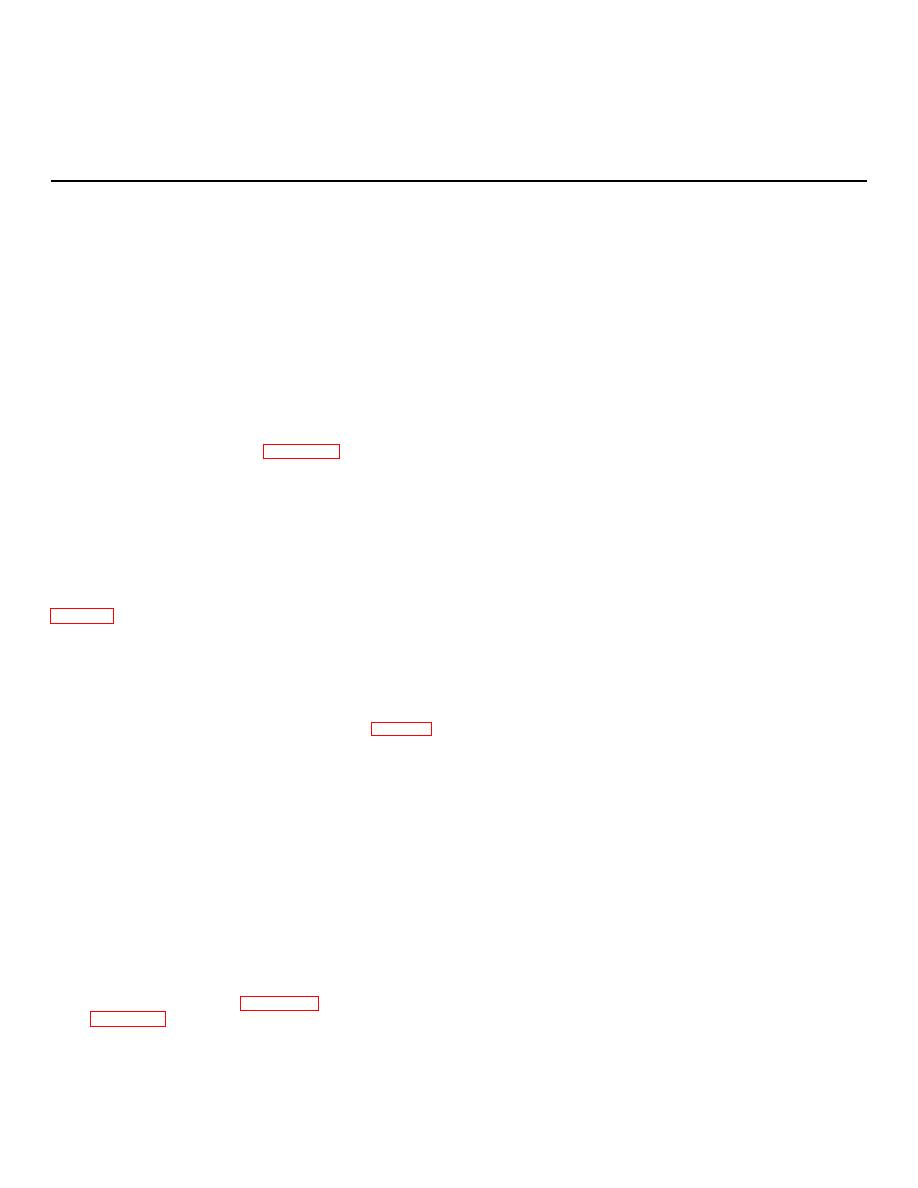 |
|||
|
|
|||
|
Page Title:
CHAPTER 7 DIRECT SUPPORT (INTERMEDIATE) MAINTENANCE INSTRUCTIONS |
|
||
| ||||||||||
|
|
 TM 5-6350-262-14/5
NAVELEX 0967-466-9050
TO 31S9-4-38-1 Chg 3
CHAPTER 7
DIRECT SUPPORT (INTERMEDIATE)
MAINTENANCE INSTRUCTIONS
Section I. GENERAL
WARNING
The Control Unit contains a rechargeable battery which may generate ignitible amounts of
hydrogen gas if certain failures occur. This is a potential safety hazard. Do not smoke when
opening the Control Unit door. Allow the unit to ventilate with the door open for two minutes
before turning the POWER switch to OFF or performing any other maintenance action. If
excessive heat or fumes of any nature are being emitted from the Control Unit, immediately open
the enclosure door and ventilate for two minutes before turning the power off. Do not smoke in
the vicinity of the unit during initial opening or during the two-minute ventilation period.
7-1. Scope
7-2. Purpose
This chapter provides specific instructions for all maintenance
functions authorized direct support maintenance personnel by
The purpose of this chapter is to provide instructions
the maintenance allocation chart (appendix B). Included is a
necessary for keeping the control unit operating properly. No
list of test equipment required for maintenance,
periodic preventive maintenance is required by direct support
troubleshooting and repair instructions, entrance and exit time
maintenance personnel, however, the performance standards
adjustment procedures, and equipment performance
should be performed as specified in section V to check the
standards.
ability of the control unit to perform its intended mission.
Section II. TOOLS AND EQUIPMENT
7-3. Standard Tools and Equipment
7-4. Special Tools and Equipment
No special tools or equipment is required for maintenance of
control unit maintenance.
the
control
unit.
Section III. TROUBLESHOOTING
instructions in the corrective action column of chart 7-1 have
7-5. General
been completed, turn off test equipment and set the control
Troubleshooting chart 7-1 is keyed to the step and procedure
unit POWER switch to OFF. Faulty electrical connections
number of the control unit performance standards, table 7-1.
between the control unit and status processor (plug P1 and
Troubleshooting the control unit consists of conducting the
receptable J12) will probably be caused by connector defects
performance standard test as prescribed in paragraph 7-24
rather than wiring defects. Replace assemblies that have
and, in case of an unacceptable test result, replacing the
been removed as part of the correction action instruction.
component or module specified in the corrective action
Disconnect plug P1 and examine both halves of the connector
column of the troubleshooting chart. Instructions for replacing
assembly for bent, broken, loose, dirty, or missing pins and
defective components are provided in section IV.
receptacles. Examine also for moisture. If no damage is
7-6. Troubleshooting the Control Unit
observed, check continuity of switches S3 and S5 as
Troubleshooting chart 7-1 lists all the symptoms and probable
applicable. Make a thorough visual inspection of wiring
causes that may appear while performing the performance
insulation and components.
standards test. It a failure indication is repeated after all
Section IV. MAINTENANCE OF CONTROL UNIT
7-7. Scope
or checkout on the Control Unit take care
to ensure that the test points on the
a.
This section contains instructions for corrective
Status Processor circuit cards are never
maintenance of the control unit. The extent of maintenance to
be performed by direct support personnel is governed by the
inadvertently grounded.
When taking
maintenance allocation chart (appendix B) and allocation of
voltage measurements with a voltometer
parts (appendix C).
ensure that the meter is set to the proper
voltage range before plugging a probe
CAUTION
into a test point.
When installing or performing maintenance
Change 3
7-1
|
|
Privacy Statement - Press Release - Copyright Information. - Contact Us |